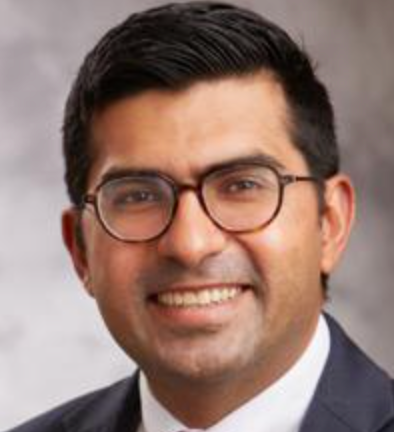Understanding Chronic Venous Insufficiency, With Ankur Shukla, M.D.
Chronic venous insufficiency affects millions but is often misunderstood. Ankur Shukla, M.D., breaks down the facts, symptoms and treatments.
By
Lana Pine
| Published on July 23, 2025
5 min read
Ankur Shukla M.D.
Credit: Banner Health

Chronic venous insufficiency (CVI) may not be a household term, but its symptoms (leg swelling, varicose veins and skin changes) are far more common than most people realize. Affecting nearly one in three adults, CVI is often mistaken for cosmetic vein issues when it can actually lead to serious complications like ulcers if left untreated. In this Q&A, Ankur Shukla, M.D., a board-certified vascular surgeon with Banner Health, explains the real impact of CVI, what to watch for and how simple lifestyle changes and early treatment can make a major difference in quality of life.
To start, what exactly is CVI, and how does it differ from something people might be more familiar with, like varicose veins?
Ankur Shukla, M.D.: Great question. Chronic venous insufficiency is actually a broad spectrum of disease. It’s the umbrella term that includes symptoms like leg swelling, varicose veins, skin discoloration and, in more severe cases, venous ulcers.
There’s a lot of shock value associated with varicose veins because they’re visible — people look at them and instinctively know something isn’t right. That’s why varicose veins are often the first thing you see when you Google CVI. But really, they’re just one part of the larger picture. Genetics plays a major role in who develops CVI, and women tend to present with symptoms more often than men.
The word “benign” is often used to describe CVI. Is that accurate or misleading?
AS: CVI can seem “benign” early on, but it doesn’t always stay that way. Left untreated, it can absolutely progress. The good news is that early intervention, especially through lifestyle changes, can make a big difference.
The first thing I always ask patients is, “Are you sleeping in a bed or a recliner?” Lying flat in bed overnight, with your legs level to your heart, gives your veins a chance to drain properly. A lot of seniors fall asleep in recliners, and that contributes to the problem.
Next is activity — simply walking helps a ton. Your calf muscles act like pumps, pushing blood upward. If you sit at a desk all day, set a timer and walk for five minutes every hour.
And finally, compression stockings. A 20- to 30-mmHg knee-high compression stocking can prevent or alleviate symptoms in about 95% of cases.
Are there things people might do thinking they’re helping but are actually making symptoms worse?
AS: Yes. Standing still for long periods is a big one. I have a lot of patients in professions that require prolonged standing, and they tend to notice leg swelling (edema) by the end of the day.
A simple fix: every couple of hours, lie down and elevate your legs — put them up against a wall or on a desk for 15 minutes. That decompresses the veins and resets circulation.
Is CVI hereditary? Should someone be concerned if their parent or grandparent has it?
AS: CVI is incredibly common — much more so than cancer. It affects about a third of the U.S. population in some form. That said, not everyone with it experiences symptoms.
If your grandmother has varicose veins but is otherwise active and functional, simple interventions like compression stockings can go a long way in preventing complications.
What are the most common and effective treatments for CVI?
AS: About 70% of patients benefit from radiofrequency ablation. This is a minimally invasive procedure that uses heat to close off faulty veins. It’s effective and relatively low risk.
Other treatments include sclerotherapy (injecting a foam into the vein) and phlebectomy (removing veins through tiny incisions), though those are needed less often — maybe 25% to 30% of the time.
Final thoughts — what should patients absolutely know about CVI?
AS: First and foremost, not all visible veins need to be treated. I’ve had patients who were told they needed intervention despite being asymptomatic, which can lead to unnecessary procedures. Always get a second opinion.
And make sure you’re seeing a board-certified vascular surgeon. There are providers out there marketing themselves as vein specialists after a crash course — but they’re not trained in the full scope of vascular care. Your treatment outcomes will be better with a qualified physician.
This transcript was edited for clarity.

